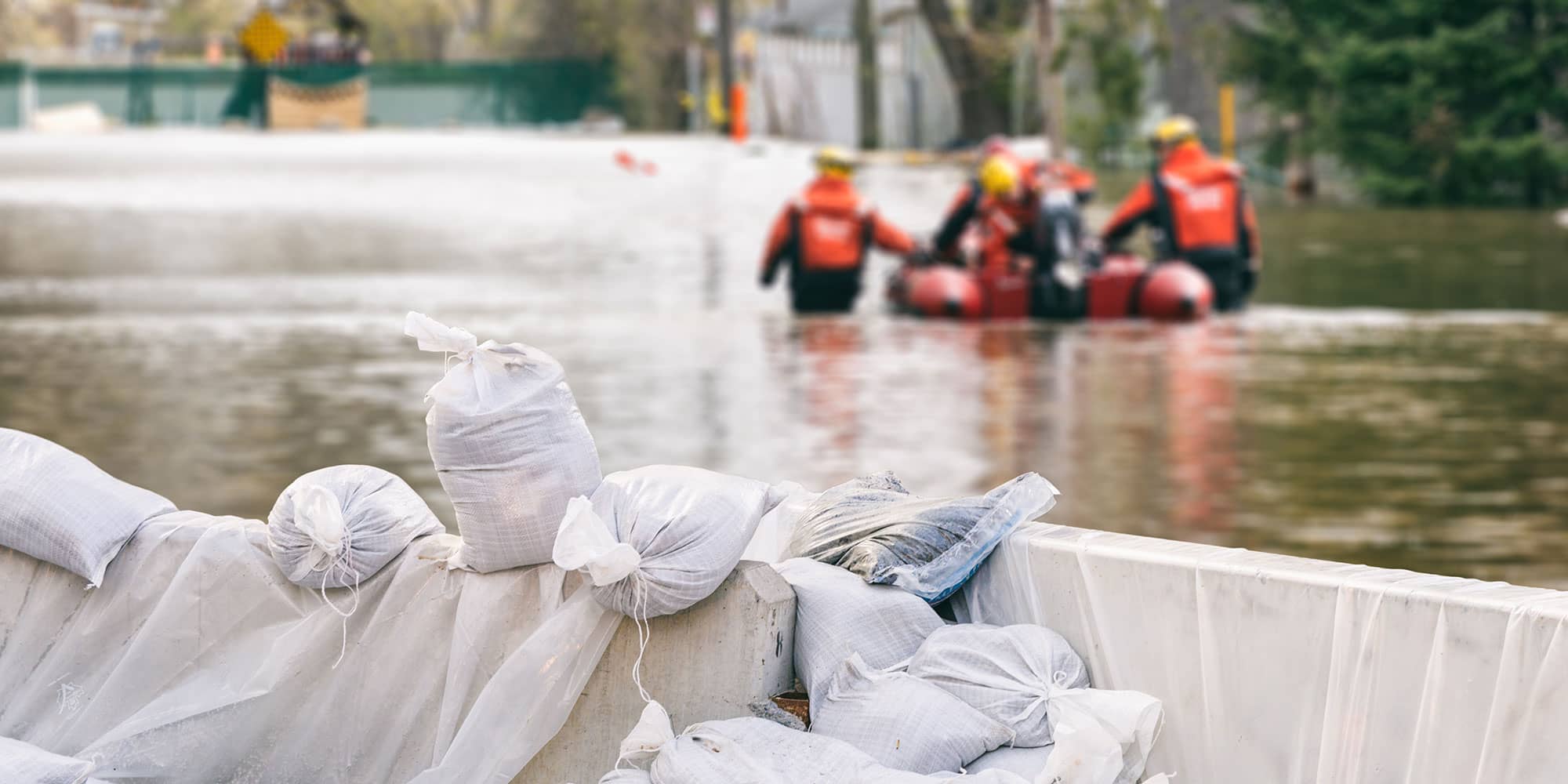Although floods cannot be predicted, you can prepare for them to help reduce harm to your business.

Develop a plan
Talk to your insurance agent about your policy and coverage. Learn about the flooding in your area and develop plans to respond to a flood event.
Location and surrounding area
- Find out if your facility is in a flood plain and learn the history of flooding in your area.
- Find out about the elevation of your facility or home in relation to streams, rivers and dams.
Evacuation plan
- Review your community’s emergency plan and evacuation routes and where to find higher ground.
- Establish warning procedures for your facility and home as well as emergency communication procedures, e.g., alert notification system, phone tree, etc.
- Establish and practice evacuation procedures for your facility and home.
Equipment prep
- Inspect the parts of your facility and home that are subject to flooding.
- Identify records and equipment that can be moved to a higher location.
- Make plans to move records and equipment if a flood occurs.
- Purchase a radio that picks up current weather conditions and use it to listen for flood watches and warnings.
Controlling flood exposures
Life and safety take precedence over everything else. Review your emergency plan with your response team, key employees, and family.
Secure chemicals and goods
Take all necessary steps to prevent the release of dangerous chemicals stored on your property, anchor all fuel tanks, postpone scheduled deliveries of goods and maintain accurate inventory of product on site.
Evacuation plan
- Identify meeting place and time for key employees and family and create voicemail for evacuation or out of office.
- Have a central point of contact for all employees so you can find out where they’re located during and after the flood.
Business continuity plan
- Send non-critical staff home and implement your business continuity plan.
- Update disaster recovery kits and activate crisis back-up procedures.
Keep drains free of debris
Use plugs to prevent floodwater from backing up into sewer drains, or install flood vents or flood proof barriers.
stay alert
Stay tuned to local media community messaging and evacuate as instructed or when circumstances require.
Prep the structure
- Raise elevators to the second level and turn off power.
- Take cell phones, charger, critical hardware and emergency kits with you.
- Unplug electrical items before leaving.
- Consider redirecting business phones to your cell phones or an answering service.
Filing a claim
In the event your area experiences a flood event, it is highly likely it will be monitored by your insurance agent and Markel. Pre-loss documentation, such as video recordings and pictures of buildings, business personal property inventories, should be up to date and included as part of your evacuation materials. Working with your agent is a great resource to understand what might be necessary to help with documentation, if you should need it.
Building back
Stay informed and aware
- Listen to news reports to verify the community water supply is safe to drink.
- Avoid floodwaters, which may be contaminated or electrically charged, and be aware of areas where floodwaters have receded.
- Roads may have weakened and could collapse under the weight of your car.
- Clean and disinfect everything that got wet.
Assessing damage
- Implement your disaster recovery plan.
- Assess damage and notify key people of next steps on basis of damage assessment.
Notifying parties
- Contact employees via determined communication method and discuss next steps.
- Contact your insurance agent to work on filing a claim.
Resources that can help
If you would like additional information, the resources and references below may help.
CDC
Ready.gov
World Health Organization
NOAA National Severe Storms Laboratory
National Geographic
Disclaimer: This content is intended for general information purposes only, and should not be construed as advice or opinions on any specific facts or circumstances. This content can’t be assumed to contain every acceptable safety and compliance procedure or that additional procedures might not be appropriate under the circumstances.
-

Report a claim
We have dedicated and empathetic claims professionals with specialized knowledge in their product lines.
-

Claims
Find a sense of comfort knowing you have a team aiming to work in your best interest to help you get the most from your insurance protection.
-

Risk Navigators
Markel's Risk Navigators provide a comprehensive understanding of subjects relevant to our insureds in the construction, environmental, primary casualty, and products liability categories.

